Compact Laser Modules with Phono Jack
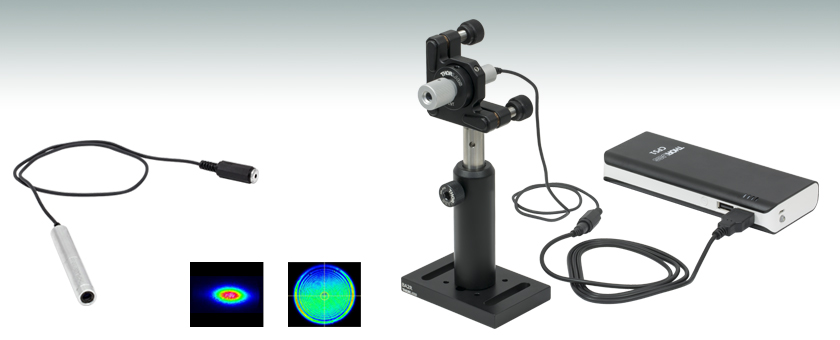
- Wavelengths from 405 nm to 980 nm
- Collimated and Adjustable-Focus Versions
- Compact Ø8 mm or Ø11 mm Housing Options
CPS532
Collimated Laser Module
Power Supply Not Included
Application Idea
Adjustable-Focus Laser Module Mounted in a KM100 Using an AD11NT Adapter
Elliptical or Round Beam Profiles
The CPS1 includes both a USB-to-Micro-USB cable and a custom USB-to-Phono cable.

Please Wait
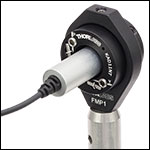
Click to Enlarge
CPS450 Laser Diode Module Held in a KAD11NT Unthreaded Kinematic Adapter and Mounted into an FMP1 Fixed Optic Mount
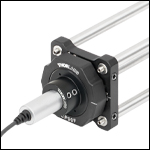
Click to Enlarge
CPS980 Module Held in an AD11F SM1-Threaded Adapter and Mounted into a CP44F Quick-Release Cage Plate Within a 30 mm Cage System
| Quick Links |
|---|
| Laser Diode Modules |
| 405 nm - 532 nm |
| 635 nm |
| 650 nm - 780 nm |
| 830 nm - 980 nm |
| Accessories |
| Mounting Adapters |
| Laser Module Kit |
| Kinematic Mount |
| 5 VDC Power Supply |
| 5 VDC Battery Pack |
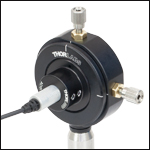
Click to Enlarge
CPS980S Laser Diode Module Held in an AD8F SM1-Threaded Adapter and Mounted into an LM1XY XY Translation Mount


Features
- Collimated or Adjustable-Focus Laser Modules
- Compact Ø8 mm or Ø11 mm Housing Makes these Modules Ideal as Alignment Lasers
- Lasing at Wavelengths from 405 nm to 980 nm (See Table to the Right)
- Four 635 nm Wavelength Options Provide Alternatives to HeNe Lasers
- Round or Elliptical Beam Profile Options
- Constant Power Mode Operation Using Built-In Photodiode Feedback
- Accessories to Power and Mount the Laser Modules Available Below
These phono-jack-equipped laser modules are available in either collimated or adjustable-focus varieties and provide output powers ranging from 0.85 mW to 4.5 mW (laser safety Class 2 or 3R depending on the model). Each module has an output beam shape that is either elliptical or round, as indicated in the tables below. These modules, which offer single-spatial-mode output and a compact cylindrical housing, are ideal for use as alignment lasers in optical systems.
All CPS laser modules are driven in constant-power mode, with feedback from an internal photodiode used to maintain the optical output power. As these products are not thermally stabilized, their optical output power may fluctuate slightly during operation.
Power Supply Options
Each module requires a 5 VDC power supply (not included) to operate. We offer the CPS1 External Battery Pack as well as the LDS5 Wall Adapter below. The CPS laser modules connect directly to the output of the LDS5 adapter, while the external battery pack requires the use of a USB-to-phono plug, which is included with each CPS1 battery pack.

Click to Enlarge
Portable 5 V Battery Pack Available
| Webpage Features | |
|---|---|
| Clicking this icon opens a window that contains specifications and mechanical drawings. | |
Alternatively, a male 2.5 mm phono plug is included with each CPS laser module for customers who wish to wire their own power supply. These modules have either an 18" (457 mm) or 24" (610 mm) long cable with a female 2.5 mm phono socket for connection to a power supply.
Mounting Options
The Ø8 mm and Ø11 mm housings are compatible with our line of optomechanical components through the use of various mounting adapters, as shown in the images above. Depending on the adapter chosen, these laser modules can be directly mounted into either internally SM1-threaded (1.035"-40) components or mechanics with a Ø1" bore. Further details on each adapter and its compatibility with our line of optomechanics can be found below.
Thorlabs also offers a Mini-Series kinematic mount for Ø11 mm laser modules. This kinematic mount is among our smallest kinematic mounts available and features 4-40 (M3) taps for mounting onto our Ø6 mm Mini-Series posts.
In addition, we offer mounting kits - which include a KM100T kinematic mount, post, post holder, base, and 5 VDC power supply - for an all-in-one mounting solution for these modules. Please note that the knurled knob used for focus adjustment on the CPS635F, CPS650F, and CPS670F laser modules is too large for the mounting adapter bore. This knob can be unthreaded to mount the diode module in the same manner as the collimated versions. Make sure to loosen the setscrews locking the knob in place before unthreading; not doing so can damage the threading. Alternatively, the module can be mounted by threading the cord and phono plug through the adapter first.
CPS Laser Power Connector
LDS5 and CPS1 Power Supply Connector

Laser Safety and Classification
Safe practices and proper usage of safety equipment should be taken into consideration when operating lasers. The eye is susceptible to injury, even from very low levels of laser light. Thorlabs offers a range of laser safety accessories that can be used to reduce the risk of accidents or injuries. Laser emission in the visible and near infrared spectral ranges has the greatest potential for retinal injury, as the cornea and lens are transparent to those wavelengths, and the lens can focus the laser energy onto the retina.
Safe Practices and Light Safety Accessories
- Laser safety eyewear must be worn whenever working with Class 3 or 4 lasers.
- Regardless of laser class, Thorlabs recommends the use of laser safety eyewear whenever working with laser beams with non-negligible powers, since metallic tools such as screwdrivers can accidentally redirect a beam.
- Laser goggles designed for specific wavelengths should be clearly available near laser setups to protect the wearer from unintentional laser reflections.
- Goggles are marked with the wavelength range over which protection is afforded and the minimum optical density within that range.
- Laser Safety Curtains and Laser Safety Fabric shield other parts of the lab from high energy lasers.
- Blackout Materials can prevent direct or reflected light from leaving the experimental setup area.
- Thorlabs' Enclosure Systems can be used to contain optical setups to isolate or minimize laser hazards.
- A fiber-pigtailed laser should always be turned off before connecting it to or disconnecting it from another fiber, especially when the laser is at power levels above 10 mW.
- All beams should be terminated at the edge of the table, and laboratory doors should be closed whenever a laser is in use.
- Do not place laser beams at eye level.
- Carry out experiments on an optical table such that all laser beams travel horizontally.
- Remove unnecessary reflective items such as reflective jewelry (e.g., rings, watches, etc.) while working near the beam path.
- Be aware that lenses and other optical devices may reflect a portion of the incident beam from the front or rear surface.
- Operate a laser at the minimum power necessary for any operation.
- If possible, reduce the output power of a laser during alignment procedures.
- Use beam shutters and filters to reduce the beam power.
- Post appropriate warning signs or labels near laser setups or rooms.
- Use a laser sign with a lightbox if operating Class 3R or 4 lasers (i.e., lasers requiring the use of a safety interlock).
- Do not use Laser Viewing Cards in place of a proper Beam Trap.
Laser Classification
Lasers are categorized into different classes according to their ability to cause eye and other damage. The International Electrotechnical Commission (IEC) is a global organization that prepares and publishes international standards for all electrical, electronic, and related technologies. The IEC document 60825-1 outlines the safety of laser products. A description of each class of laser is given below:
| Class | Description | Warning Label |
|---|---|---|
| 1 | This class of laser is safe under all conditions of normal use, including use with optical instruments for intrabeam viewing. Lasers in this class do not emit radiation at levels that may cause injury during normal operation, and therefore the maximum permissible exposure (MPE) cannot be exceeded. Class 1 lasers can also include enclosed, high-power lasers where exposure to the radiation is not possible without opening or shutting down the laser. |  |
| 1M | Class 1M lasers are safe except when used in conjunction with optical components such as telescopes and microscopes. Lasers belonging to this class emit large-diameter or divergent beams, and the MPE cannot normally be exceeded unless focusing or imaging optics are used to narrow the beam. However, if the beam is refocused, the hazard may be increased and the class may be changed accordingly. |  |
| 2 | Class 2 lasers, which are limited to 1 mW of visible continuous-wave radiation, are safe because the blink reflex will limit the exposure in the eye to 0.25 seconds. This category only applies to visible radiation (400 - 700 nm). |  |
| 2M | Because of the blink reflex, this class of laser is classified as safe as long as the beam is not viewed through optical instruments. This laser class also applies to larger-diameter or diverging laser beams. |  |
| 3R | Class 3R lasers produce visible and invisible light that is hazardous under direct and specular-reflection viewing conditions. Eye injuries may occur if you directly view the beam, especially when using optical instruments. Lasers in this class are considered safe as long as they are handled with restricted beam viewing. The MPE can be exceeded with this class of laser; however, this presents a low risk level to injury. Visible, continuous-wave lasers in this class are limited to 5 mW of output power. |  |
| 3B | Class 3B lasers are hazardous to the eye if exposed directly. Diffuse reflections are usually not harmful, but may be when using higher-power Class 3B lasers. Safe handling of devices in this class includes wearing protective eyewear where direct viewing of the laser beam may occur. Lasers of this class must be equipped with a key switch and a safety interlock; moreover, laser safety signs should be used, such that the laser cannot be used without the safety light turning on. Laser products with power output near the upper range of Class 3B may also cause skin burns. |  |
| 4 | This class of laser may cause damage to the skin, and also to the eye, even from the viewing of diffuse reflections. These hazards may also apply to indirect or non-specular reflections of the beam, even from apparently matte surfaces. Great care must be taken when handling these lasers. They also represent a fire risk, because they may ignite combustible material. Class 4 lasers must be equipped with a key switch and a safety interlock. |  |
| All class 2 lasers (and higher) must display, in addition to the corresponding sign above, this triangular warning sign. |  |
|
| Posted Comments: | |
yujie lu
(posted 2023-10-31 10:13:44.527) 具体的配套器件 fmortaheb
(posted 2023-11-02 10:59:48.0) Thank you very much for contacting us. An application engineer from our team in China will discuss this directly with you. fmortaheb
(posted 2023-11-02 10:59:48.0) Thank you very much for contacting us. An application engineer from our team in China will discuss this directly with you. craig uhrich
(posted 2023-09-12 08:09:14.29) For these laser modules, I think it would be helpful to know the polarization quality and direction of the beams. A simple extinction ratio (e.g. 100:1) would tell how polarized the beam is, and for elliptical beams it would be important to know the direction of polarization relative to the beam axes. Don't need values with one degree resolution, but it would be nice to know if the polarization is roughly along the long or short axes of the beam shape. Thanks. Conner Phillips
(posted 2023-07-25 13:52:39.837) I am looking into using either a CPS830(S) or CPS850(S) for alignment of an optical system using a shearing interferometer. While the individual peaks in the respective spectra are quite narrow, the presence of multiple peaks in a 1-2 nm range could be problematic I guess. Do you have any insight on these products in this application? Thanks you. hkarpenko
(posted 2023-07-28 08:40:25.0) Dear Conner,
thank you for your feedback. The FWHM of this laser module is ~2nm. We measure the spectrum for each device seperately and this is also included in the test report, which we send out with the device. I will contact you directly to discuss this issue in more detail with you. Dmitry Murzin
(posted 2023-03-25 13:41:28.69) Hi! Does the polarization state of a CPS532 series laser diode drift over time? Thank you. dpossin
(posted 2023-03-28 07:29:20.0) Dear Dmitri,
We do not test this but the polarization should stay the same along the entire life time. user
(posted 2023-02-02 12:12:02.353) We purchased a CPS532-C2 a while ago and now it is broken. The reason for that issue is, that the part "boots holder_5" was loose. So that part turned several times over time and that lead to a wire break. It there an option to deassemble the internal PCB for soldering the wires to the PCB again? hchow
(posted 2023-02-02 10:51:22.0) Dear User, thank you for your feedback. As the problem you are facing is unique, I will reach out to you personally to discuss possible solutions to your problem. Thank you. Christopher Ebbers
(posted 2022-11-29 10:56:19.073) I just received my CPS520 laser source. The data sheet indicates the actual emission wavelength is 517 nm.
My application requires a wavelength between 520nm - 530 nm.
Is there any way to get a CPS520 within these longer wavelength parameters (ideally as close as possible to 523 nm)
Thanks in advance
Chris cdolbashian
(posted 2022-12-02 04:09:31.0) Thank you for reaching out to us with this inquiry. This is potentially possible for us to do! I have reached out to you directly to initiate this process. For future custom-adjacent request, please contact Techsales@thorlabs.com. 高 高
(posted 2022-09-19 14:45:08.003) 我想了解一下带USB的激光模块和带插孔的激光模块的具体差别,以及635nm的这款激光器的光谱线宽 Ana Doblas
(posted 2022-08-23 15:42:25.263) Hi! I would like to know if one can control the CPS532 diode automatically with software. wskopalik
(posted 2022-08-24 09:28:21.0) Thank you very much for your feedback!
The CPS532 as well as the other CPS modules cannot be controlled directly on a computer. They do not have a computer interface. You could however use a power supply / voltage source with a computer interface. Then you could control the power supply on the computer and use it to switch the CPS532 on and off.
I will contact you directly to provide further assistance. Terry Bartlett
(posted 2022-04-18 12:23:19.01) You mention that these compact phono jack lasers come with elliptical or round beam profiles, but in the description it looks like all come with elliptical profiles. Is it possible to get a CPS450 with a round beam profile? cdolbashian
(posted 2022-04-20 04:49:21.0) Thank you for reaching out to us Terry! The statement above is simply indicating that some of the CPS lasers have circular profiles while others are elliptical. Although the one you are interested in is elliptical, we do have a nice investigation on our "Lab Facts" showing different methods of circularizing a beam:https://www.thorlabs.com/newgrouppage9.cfm?objectgroup_id=11426. Petteri Teikari
(posted 2021-10-26 12:19:13.59) Hi,
I was interested in measuring the laser (junction) temperature or the temperature of the heatsink? Is there a recommended procedure for that?
Or can you assume safely that the laser module (e.g. we have your CPS532) will run at room temperature if mounted properly (proper heat dissipation) with no wavelength shifft?
Best
Petteri soswald
(posted 2021-10-29 07:55:15.0) Dear Petteri,
thank you for your feedback. The temperature of the laser junction or the heatsink can unfortunately not be measured without opening the housing, which we do not recommend.
I have contacted you directly to discuss your requirements regarding wavelength shift. Andrey Kuznetsov
(posted 2021-09-02 23:10:45.087) Do you have laser mounts with built-in TEC and temperature sensor that I could drive with my TEC controller? The lab's cold ambient air is drastically changing the light output when the dark box door is opened and closed. dpossin
(posted 2021-09-14 11:10:03.0) Dear Andrey,
Thank you for your feedback. We have quite a large selection regarding temperature controlled lasermounts. See here: https://www.thorlabs.com/newgrouppage9.cfm?objectgroup_id=8427
I am reaching out to you in order to offer more detailed information. Andrey Kuznetsov
(posted 2021-05-26 16:35:31.033) Do you have lasers or attachments that turn a point source laser beam into a line? For alignment purposes, a line beam would be useful. MKiess
(posted 2021-05-28 10:35:29.0) Dear Andrey, thank you very much for your inquiry. You can use a Powell lens for this purpose, for example, as can be found under the following link:
https://www.thorlabs.com/newgrouppage9.cfm?objectgroup_id=13875
I have contacted you directly to discuss further details and other possibilities. Tom Dzelzainis
(posted 2021-01-21 16:34:39.297) Hi,
Are the quoted divergences the full or half angle divergence. Also, is the diameter a FWHM, or 1/e2 diameter, or something else?
Many thanks,
Tom. dpossin
(posted 2021-01-22 10:14:21.0) Dear Tom,
Thank you for your feedback. Well the specified diameter is defined as the 1/e^2 diameter and we specify the full angle divergence for our CPS laser modules. Kevin CHAN
(posted 2020-11-17 22:21:29.86) May I know the bandwidth of the laser of CPS532-C2 or the coherence length of it? soswald
(posted 2020-11-18 09:03:27.0) This is a response from Soenke at Thorlabs. Thank you for your inquiry. I am very sorry about the fact that we cannot specify coherence features for the CPS modules. Unfortunately, we do not have data about the spatial coherence length or area for these modules. The temporal coherence length, however, is related to the spectral emission bandwidth.
A typical spectrum for each module is shown in the spec sheet. Please note that these plots are typical only and will vary from unit to unit. In some cases, the resolution of the spectrometer/OSA is not sufficient to show the actual linewidth. Furthermore, the temperature of the CPS modules is not actively controlled and for some modules, you will see that temperature also affects mode distribution. Chen Li
(posted 2020-08-12 15:09:27.917) We purchased a CPS532-C2 laser module for the purpose of evaluating the tilt angle of a customized laser v-mount module. We wanted to assess the beam position movement by mounting the CPS532-C2 module on the v-mount along an optical rail testing system. However, we observed that the beam coming from the CPS532-C2 was not at the center of the cylinder/laser tube. When looking at the front end of the laser module, the lens is not at the center of the cylinder/laser tube. Can we assume the laser beam is still parallel to the center of the cylinder/laser tube with a constant offset in this case? If not, is there any recommended collimated source mounted in cylinders that we could use to achieve our goal? nreusch
(posted 2020-08-14 02:31:36.0) Thank you for contacting us. The axis deviation of CPS532-C2 is specified to be 5 mrad maximum. If you observe a larger deviation, please contact your local Tech Support team. We currently do not offer a compact laser diode module with a lower axis deviation specification. 大塚 洋一
(posted 2020-04-12 12:41:23.997) レーザーモジュール:635 nmの長期安定性についてお教え下さい。
長時間(24時間程度)のあいだに、強度の揺らぎはどれくらいあるのか教えて頂けると有難く存じます。
宜しくお願い致します。 MKiess
(posted 2020-04-14 11:02:57.0) This is a response from Michael at Thorlabs. Thank you for the inquiry. We have measured the power stability for a period of 8h. The fluctuation over this period is 2% maximum. Dave Kemper
(posted 2019-09-24 12:31:26.567) Are there any problems known for the CPS635R suddenly losing its intensity? I got a set-up running with the CPS635R and after two weeks it lost its power completely. Also, it looks like some kind of obstruction is in its path (like a hair in front of the lens).
Any suggestions on what this can be? I think I have to order a new one... MKiess
(posted 2019-10-04 04:27:07.0) This is a response from Michael at Thorlabs. Thank you for the inquiry. I contacted you directly to discuss this issue and your application. Violet Poole
(posted 2019-04-26 00:08:19.44) Hi,
We have a CPS532 laser diode module that we are incorporating into our microscope. We have the LDS5 power supply and that works great, but we are integrating all the electronics and power for them into one area and would like to use a different power supply.
I was wondering if you give me more information about the power requirements for the CPS532. Does the power supply for the laser diode need to be current controlled or just voltage regulated? Does the laser diode have internal circuitry that regulates to voltage or current? How much power regulation is required to maintain a constant steady output? Etc. wskopalik
(posted 2019-04-30 04:17:30.0) This is a response from Wolfgang at Thorlabs. Thank you very much for your inquiry!
The CPS532 needs a DC operating voltage of 5V which can e.g. be supplied by the LDS5/LDS5-EC or by the CPS1 battery pack. Other DC voltage sources with a flat 5V output voltage would of course work as well. The flatter and more constant the supplied voltage is, the more stable the laser will work.
The CPS laser diode modules are internally operated in constant-power mode, i.e. you have a feedback from an internal photodiode which is used to maintain the optical output power. These diodes are however not thermally stabilized, so their optical output power may fluctuate slightly during operation.
I will contact you directly to provide further assistance. ggorju
(posted 2018-11-07 09:10:03.977) We would like yo know the spatial coherence length of the CPS module. There is several posts asking this question but never an answer nreusch
(posted 2018-11-15 07:20:09.0) This is a response from Nicola at Thorlabs. Thank you for your inquiry. I am very sorry about the fact that we cannot specify coherence features for the CPS modules. Unfortunately, we do not have data about the spatial coherence length or area for these modules. The temporal coherence length, however, is related to the spectral emission bandwidth. A typical spectrum for each module is shown in the spec sheet. Please note that these plots are typical only and will vary from unit to unit. In some cases, the resolution of the spectrometer/OSA is not sufficient to show the actual linewidth. Furthermore, the temperature of the CPS modules is not actively controlled and for some modules, you will see that temperature also affects mode distribution. michael
(posted 2018-09-17 09:51:15.527) Which red diode laser would you recommend for making holograms? A relevant question I guess, since you also sell holographic film plates. nreusch
(posted 2018-09-21 02:13:28.0) This is a response from Nicola at Thorlabs. Thank you for your inquiry. A list of suitable light sources for our red-sensitive as well as our green-sensitive holography plates is shown at https://www.thorlabs.de/newgrouppage9.cfm?objectgroup_ID=6716&tabname=Other%20Components. We also recommend diverging the light of a collimated source by means of a lens. If you would like us to recommend a diode for your specific application, please do not hesitate to contact us with further information about your setup. karol.686
(posted 2018-07-12 08:09:14.19) Hi, we are going to buy CPS635S from Thorlabs, we would like to know the spatial and temporal coherence length of these laser diodes. Thanks swick
(posted 2018-07-18 03:49:12.0) This is a response from Sebastian at Thorlabs. Thank you for the inquiry.
We have no data about the coherence for these Lasers modules.
Therefore we can not provide data for that. I contacted you directly for further assistance. pavlenko
(posted 2018-07-10 17:34:33.127) Hi! We are using several different CPS modules in a custom built mount that happens to electrically connect the aluminum housings. We learned that typically the housings are electrically isolated from +/- leads. However, sometimes it's not the case, to a point when a module would turn on undesirably by receiving power from am adjacent module via the connected housings. I could not find any info on the housing wiring/isolation vs +/- leads. If the parameter is not rated, is it in principle model-specific of sample-dependent? Thanks! swick
(posted 2018-08-09 03:56:32.0) This is a response from Sebastian at Thorlabs. Thank you for the inquiry.
The CPS modules are not isolated. We recommend to use floating supplies or the modules need to be mounted in an isolated way.
I contacted you directly for assistance. paul.janin
(posted 2018-05-09 17:09:06.67) Hello, I'm interested in the CPS 635R. Are there any internal electronics that would limit the input voltage bandwith? Would this diode be suitable for modulation in the 100 kHz - 1MHz range? YLohia
(posted 2018-05-09 01:45:41.0) Hello, thank you for contacting Thorlabs. The CPS line of diodes can only be used in a constant power mode, which prevents any modulation capability. biegel
(posted 2018-01-15 14:16:06.253) I have a cps532 laser. I am driving it with an LDS5. The output light intensity wanders over 50% with occasional jumps in power and occasional high frequency noise. The description mentions internal photodiode feedback control. How does that work internally? Perhaps that is defective? YLohia
(posted 2018-03-02 09:41:49.0) Hello, thank you for leaving feedback regarding CPS532 and my apologies for the problems you are encountering with your unit.
The photodiode is not built-in, since this is a frequency-doubled module and the pump diode is 1064nm (there is a filter to attenuate this wavelength before it hits the photodiode). It is quite likely that this problem is caused due to a thermal issue as the diode and crystal continue to warm the output power cycles, or perhaps the temperature of one of the components is cycling. These 532nm units tend to be particularly sensitive to temperature due to the non-linear crystal inside. Providing some heatsinking could fix the issue. Sometimes issues like this can also be caused by power supplies that are not outputting a constant 5V.
I have reached out to you directly via email to troubleshoot this further. wolter
(posted 2017-12-30 14:01:48.137) Hello, I am interested in the CP980S. Could you state an approximate value for the beam quality factor or alternatively the typical beam divergence (the data sheet states a max. divergence of 1.5 mrad) and the position of the waist? nbayconich
(posted 2018-01-15 05:09:40.0) Thank you for contacting Thorlabs. At the moment we have not measured the M^2 quality factor for these CPS laser diodes. The M^2 factor will be similar to our other fabry perot laser diodes. For improved beam quality, a spatial filter could be used, but that would reduce the total power. christopher.little
(posted 2017-12-15 10:00:41.973) Are the beams of these products p-polarised or s-polarised (vertical or horizontal)? tfrisch
(posted 2017-12-15 08:34:01.0) Hello, thank you for contacting Thorlabs. The internal laser diodes are typically TE polarized. However, as the housing of the tube is cylindrical, you may rotate the entire unit such that the polarization is either vertical, horizontal, or any arbitrary linear state. apespejo
(posted 2017-09-11 23:06:11.543) Hello, do you already know the coherence length of cps405?, or maybe an estimated value? tfrisch
(posted 2017-09-26 02:21:08.0) Hello, thank you for contacting Thorlabs. Coherence length will be related to the bandwidth of the laser which can change with temperature. I would estimate the coherence length at roughly 70 to 700um. I will reach out to you directly to discuss this. Simone.I.Rupp
(posted 2017-06-26 08:08:36.023) Hello, I have a CPS635R in an AD11F adapter. I would like to use it as a class 1 laser. Can you recommend a configuration e.g. with an ND filter attached to the adapter to make the laser diode module class 1? Which filter would you recommend? tfrisch
(posted 2017-06-27 02:55:57.0) Hello, thank you for contacting Thorlabs. I would hesitate to recommend a set of parts to reclassify a Class 3R laser as Class 1, as any modifications made with stock components could be undone with disassembly. I will reach out to you directly about your application. dehmous.k
(posted 2017-04-10 09:41:20.78) Can you provide an approximate lifetime hours for the CPS532-C2 in GB??
thanks tfrisch
(posted 2017-04-19 04:35:26.0) Hello. Expected lifetime of CPS532-C2 is about 5k hours. I will reach out to you directly as well. kipp
(posted 2017-02-21 19:32:28.88) Can you provide a 450 nm laser diode module with a round beam? Elliptical does not work for my application, and I see you offer the option of elliptical or round beams on many of your other wavelengths. It has to be 450 nm for this application. tfrisch
(posted 2017-02-24 09:05:37.0) Hello, thank you for contacting Thorlabs. While we don't have a module with a round beam at 450nm, the easiest way to get a round beam from an elliptical beam is to use an Anamorphic Prism Pair. I will reach out to you directly. keistel
(posted 2016-11-14 13:41:19.247) I have the CPS405, and I'm trying to figure out how to power it. We have a lot of 5V power supplies, so I didn't want to get another one, but I can't find any info on the input power requirements. It just says "5V", but the power supply Thorlabs sells seems to be very specialized. Can someone send me the input power conditioning requirements?
Thanks tfrisch
(posted 2016-11-16 01:27:22.0) Hello, thank you for contacting Thorlabs. The voltage should be from 4.9 to 5.2V, and the current draw is low enough for most voltage sources. the input is a 2.5mm phono cable. I will contact you directly to discuss the power requirements further. wrholland
(posted 2016-10-10 08:53:18.463) Question: On these lasers, is the beam axis precisely parallel to the housing axis? In other words, if the housing is clamped into a V-groove, can the beam be used as mechanical indicator of direction? (considering CPS635R) jlow
(posted 2016-10-10 11:16:42.0) Response from Jeremy at Thorlabs: The beam axis deviation (the parallelism between the module housing and the output beam) is <5mrad for the CPS635R. You can see the specification for other laser diode modules on this page by clicking on the blue info icon in the subgroup. siddharth.rawat
(posted 2016-10-08 22:18:27.157) Hi,
We have bought CPS635, CPS405, CPS532 from Thorlabs, we would like to know the spatial coherence length of these laser diodes.
Thanks jlow
(posted 2016-10-21 04:27:27.0) Response from Jeremy at Thorlabs: We do not spec this but we can measure this for one off the shelf and send you the information. I will contact you directly about this. daniel.o-connor
(posted 2016-06-16 18:34:19.347) I want to create a laser information label for a CPS532-C2 laser diode in order to comply with laser safety standards.
In order to fully satisfy the standard I need both the name and publication date of the classification standard you have used for this product. I can only find the name (IEC 60825-1). The date of publication is missing. Can you provide me this?
Cheers,
Daniel. besembeson
(posted 2016-06-16 04:27:38.0) Response from Bweh at Thorlabs USA: I will contact you with this information. user
(posted 2016-02-22 09:04:20.667) German describtion??? besembeson
(posted 2016-03-04 01:29:04.0) Response from Bweh at Thorlabs USA: Please contact our Germany office at europe@thorlabs.com with any questions that you my have in German. alekkom
(posted 2016-02-17 10:54:13.727) Is there any certificate of calibration for CPS532? Can I donwload it? besembeson
(posted 2016-03-02 05:42:12.0) Response from Bweh at Thorlabs USA: We don't provide such a certificate for these units. The output will be as we describe in the specification sheet: http://www.thorlabs.com/thorcat/22400/CPS532-SpecSheet.pdf. I will contact you if we can provide other suitable documentation. dirk.lorenser
(posted 2015-09-10 07:56:32.193) I noticed that the collimated beam profiles of your laser modules are very nice and homogeneous.
Do you sell the collimation lenses in these modules as separate products or would you be able to sell them to us independently of the laser modules ?
The reason I'm asking this is because I have difficulties getting homogenous collimated beams using the standard Thorlabs molded aspheres because they produce lots of ring-like features in the collimated beam. I also have a CNC polished asphere from Thorlabs here which seems to show the same ring-like intensity modulation.
My light source is a superluminescent diode at 840nm with beam divergence angles of 10 and 30 degrees. besembeson
(posted 2015-09-29 02:45:45.0) Response from Bweh at Thorlans USA: We don't sell the collimating lenses as separate modules unfortunately. I will follow-up regarding the rings that you see but if possible, achromatic doublet collimator (https://www.thorlabs.com/newgrouppage9.cfm?objectgroup_id=1337) or triplet collimator (https://www.thorlabs.com/newgrouppage9.cfm?objectgroup_id=5124) would be other suggestions to test with. kiwa
(posted 2015-05-19 05:14:44.383) Do you have information on coherence lenght of any of your laser diodes?
I'm designing a student project and I'm looking for a laser diode with a coherence length that is easy to measure (0.1 - 50 mm) using interferometer. besembeson
(posted 2015-08-18 03:52:24.0) Response from Bweh at Thorlabs USA: We have not measured this for these CPS series laser diode modules. I will followup with you by email for an estimate and other potential diodes for your application. jjohns
(posted 2015-04-14 10:26:37.713) Do you have any idea what the beam parameter (M^2) is for the CPS532? jlow
(posted 2015-04-16 03:56:08.0) Response from Jeremy at Thorlabs: Unfortunately we do not have the M^2 measurement for our CPS series laser diode module at the moment. We will look into measuring this. user
(posted 2015-03-15 19:57:55.627) Do you have any information on the power output if you are modulating the CPS532 at frquencies ~0.1-1kHz? jlow
(posted 2015-03-24 11:53:48.0) Response from Jeremy at Thorlabs: The CPS532 is meant to be operated in CW mode only and not meant to be modulated. tinusoei
(posted 2014-07-05 18:22:45.01) I've been using a Thor Labs CPS240 laser diode in my optical setups. Now I am looking for the specifications of this model - but I can not find it on the website anymore; maybe because it has been replaced by a newer model. Could you please provide them? I especially would like to know the power and wavelength of this device.
Martijn Oei, Leiden University myanakas
(posted 2014-07-15 04:54:25.0) Response from Mike at Thorlabs: Thank you for your feedback. The CPS240 is our component item #. The item # used on our site for the CPS240 is the CPS180. The CPS180 has a power of 1 mW and a typical wavelength of 635 nm. For the current specifications of the CPS180, please see our website (http://www.thorlabs.com/newgrouppage9.cfm?objectgroup_id=1487&pn=CPS180#1620) or spec sheet (http://www.thorlabs.com/thorcat/3500/CPS180-SpecSheet.pdf). c.arpali
(posted 2014-01-27 17:12:20.773) what is the polarization stage of CPS532 laser diode, veritical linearly polarizion or horizontal one ? jlow
(posted 2014-01-27 01:32:54.0) Response from Jeremy at Thorlabs: The polarization direction for the CPS532 is not controlled relative to the package. Furthermore, the polarization extinction ratio is quite low, only about 3:1. clbell
(posted 2013-12-07 18:58:34.257) I was wondering what the laser diode compound was and it's orientation? I was thinking it must be a gallium nitride double heterostructure superconductor but I can't find the answer in any of your documents. jlow
(posted 2014-01-02 04:46:16.0) Response from Jeremy at Thorlabs: The laser diode used in the CPS405 is a GaN laser diode. hosthoff
(posted 2013-06-13 13:13:24.067) What is the laser line width (in nanometer) of the CPS532?
This info would also be useful to have on the spec sheets. Thanks! jlow
(posted 2013-06-20 10:46:00.0) Response from Jeremy at Thorlabs: There are typically a few modes (4-7 modes) in the CPS532. Each mode typically have width on the order of 30MHz. The mode spacing is around 100pm. gir
(posted 2013-05-10 15:04:25.723) I've been using the CPS196 for alignment for various alignment tasks for several months. Yesterday, while moving it, one of the power leads broke off the exposed circuit board on the back. The shrink tube had slipped off. I was able to solder the lead back on and it works again, but I'd just like to add my $0.02 and say I'd appreciate a unit with a more robust power connector. Cheers! tcohen
(posted 2013-05-15 12:25:00.0) Response from Tim at Thorlabs: Thank you very much for your feedback. We are currently looking at ways to improve this product line and are appreciative of you bringing your thoughts to our attention. acarlton
(posted 2013-04-10 14:33:18.453) Can you provide the solidworks part file for the CPS182? sharrell
(posted 2013-04-10 15:07:00.0) Response from Sean at Thorlabs: I am sorry the file was missing from the site. I've added it back to our list of support documents. kressjeremy
(posted 2013-03-21 11:08:51.833) Can you provide an approximate lifetime hours for the CPS184 at 20 deg C? If this is unknown, can you provide a best guess if the lifetime for typical laser diode is closer to 10,000 hours or 100,000 hours? jlow
(posted 2013-03-27 10:03:00.0) Response from Jeremy at Thorlabs: Unfortunately we do not have data for the mean time to failure. As an estimate, it would be closer to 10,000 hours at 20°C. itay.barnea.1
(posted 2013-03-10 05:32:55.29) How long is the coherence length of the laser diode CPS532? jlow
(posted 2013-04-01 12:08:00.0) Response from Jeremy at Thorlabs: Unfortunately the coherence length is not something that we spec at the moment. As an estimate, it should be more than 200mm based on some initial measurements. We will post the results on this feedback page once we have measured this. mismil01
(posted 2013-02-22 16:15:02.823) Respected, for my laboratory experiment (Doctoral studies), I need completed equipment to measure valve plate motion. This is suction valve at experimental reciprocating air compressor.
I need more details and your propositions.
Please contact me for any info about... tcohen
(posted 2013-02-28 15:33:00.0) Response from Tim at Thorlabs: Thank you for your inquiry. I will contact you to go over the details in your application directly. jlow
(posted 2012-12-27 11:04:00.0) Response from Jeremy at Thorlabs: The CPS196 is a class 3R so you would definitely need to use laser safety glasses with this. One possible candidate for this wavelength is the LG4 (http://www.thorlabs.com/newgrouppage9.cfm?objectgroup_id=762&pn=LG4). danco
(posted 2012-12-27 04:54:21.97) Hello, I'm interested in the CPS196 laser with the purpose of aligning an optical system (mirrors etc). Does its intensity require using protective glasses? if so, which model would you recommend? jlow
(posted 2012-12-20 10:14:00.0) Response from Jeremy at Thorlabs: The coherence length for CPS180 is approximately 0.2mm. licw275
(posted 2012-12-12 02:42:36.49) How long is the coherence length of the laser diode CPS180? guoqiang.xia
(posted 2012-11-08 04:43:49.59) From your SPEC sheets, it is shown that the working temperature of CPS180 is from -10 to 50 °C, CPS182 is from -10 to 60 °C, while for CPS196 it is from -10 to 40 °C, could you please let us know what is the reason for such differences? They are all 635nm lasers.
What will be the life time for CPS180 if its surrounding temperature is 40 °C? Whil its life time drop significantly?
Thanks! tcohen
(posted 2012-10-04 15:46:00.0) Response from Tim at Thorlabs: Thank you for your feedback! I will get in contact with you directly to provide this information. jchen
(posted 2012-10-01 10:36:57.0) Could you please provide the model of the laser diode inside CPS186? Thanks. jlow
(posted 2012-09-27 12:15:00.0) Response from Jeremy at Thorlabs: We do not have the data you requested at this moment. We will measure this and get back to you regarding this. siddharth.sivankutty
(posted 2012-09-25 14:55:37.0) Would you please let me know about the coherence length of the CPS532 and its TEM output mode? Thanks jlow
(posted 2012-08-17 12:14:00.0) Response from Jeremy at Thorlabs: The S2011 is a kit of items. The link to the individual items in the kit can be found under the overview of the subgroup. The mount used is the KM100T and you can get the SolidWorks file at http://www.thorlabs.com/Thorcat/6600/KM100T-Solidworks.sldprt. lvasbinder
(posted 2012-08-17 10:52:28.0) I am looking to purchase this part and I would like to mount it using the 8-32 clearance holes on this product instead of the stand. Is there a way I could get the SolidWorks file of this part so I can see the best way to mount it?
Thank you,
Lea Vasbinder jlow
(posted 2012-08-01 13:16:00.0) Response from Jeremy at Thorlabs: The coherence length for the CPS180 and CPS196 is estimated to be around 0.2mm. guoqiang.xia
(posted 2012-08-01 03:32:19.0) Could you please provide coherence length of CPS180 and CPS196 for me?
Thanks very much! tcohen
(posted 2012-06-29 09:19:00.0) Response from Tim at Thorlabs: You are correct that the photodiode is not directly connected to the outside world. The CPS modules have two wires for the power supply. This feeds an internal integrated driver, which is what actually controls the power using the internal photodiode for feedback. user
(posted 2012-06-29 01:30:00.0) Could you please calrify the statement "The driver in the CPS module uses an internal photodiode of the laser diode for feedback in a power control loop, which enables power stability within 1%."?
Because from the web photo of cps196, I only found two wires at the back end of the laser, which must be power supply, so the internal photodiode is not connected to the outside world, how can there be a feedback? I am puzzled, please help here.
Thanks tcohen
(posted 2012-05-31 09:32:00.0) Response from Tim at Thorlabs: Thank you for your feedback! We do have information on coherence length for some, but not all of these modules. I have contacted you to find out which ones you are interested in so that we may test and provide you with more data. benjamin.bircher
(posted 2012-05-29 16:38:49.0) Do you have an estimate on the coherence length of the CPS LD modules? bdada
(posted 2011-09-22 12:41:00.0) Response from Buki at Thorlabs:
The driver in the CPS module uses an internal photodiode of the laser diode for feedback in a power control loop, which enables power stability within 1%. user
(posted 2011-09-20 11:12:08.0) Do you have an estimate on how much (relative) the optical output power would vary over a period of 100 hours? The laser would be in room temperature conditions. jjurado
(posted 2011-06-14 16:27:00.0) Response from Javier at Thorlabs to dfwenge: Thank you very much for contacting us with your inquiry. Regarding question (1), we actually had not considered adding a strain relief assembly to these laser diode modules before. I will discuss your suggestion with our electronics design engineers and get back to you. Also, you can certainly solder the the leads back onto the circuit board; I would not expect any damage to the laser diode from doing this. (2) We do offer pinholes; however, the maximum size that we stock is 150 um. Nonetheless, we can offer a 250 um diameter pinhole that you could adapt to the front of the CPS182 as a non-standard item. I will contact you directly for further discussion.
Pinholes: http://www.thorlabs.com/NewGroupPage9.cfm?ObjectGroup_ID=1400 dfwenge
(posted 2011-06-06 11:28:14.0) I have 2 comments:
1. After using a CPS182 laser module in a experiment where the laser is often moved to various postions the power leads have broken off the connectors. I have strained relieved the power cables on a spare unit using shrink tube. This seems to work okay but it takes up more space than I would like. Have you considered providing a strain relief design on the units you sell? If I try to solder the leads back on the connector, is there a potential to damage the laser diode by overheating?
2. Do you sell a pinhole, say around 250 microns in diameter, that would mount on the front output plate of the CPS182.
Regards, Dave Wenger, SNL
505-845-7206 jjurado
(posted 2011-06-02 10:02:00.0) Response from Javier at Thorlabs to jhelt275: Thank you very much for contacting us. All the CPS modules are operated in constant power mode, which means that the power is regulated using the feedback signal from the laser diode's internal photodiode. jhelt275
(posted 2011-06-01 20:12:50.0) Hello,
is the power for the CPS198 laser diode module self-regulating, i.e. have an internal photodiode for monitoring output power?
thanks in advance for the help Thorlabs
(posted 2010-11-02 18:18:32.0) Response from Javier at Thorlabs to fathi01: the power supply is sold separately. The part number is LDS1. I will contact you directly with information regarding the TEM output mode of this module. fathi01
(posted 2010-10-19 01:47:20.0) I am asking about the diode laser model CSP 180 .
Is it TEM00 (Transverse Electromagnetic Mode 00)and there is a power supply included or I should order for a power supply also? Adam
(posted 2010-05-12 09:08:46.0) A response from Adam at Thorlabs: Thank you for the great customer inspired new product idea. I agree that these would make an excellent addition to our product line and will make this recommendations to our Business unit leaders. If it gets adopted, we will let you know. user
(posted 2010-05-11 20:22:39.0) It would be great to see compact laser diode modules at 1064nm or 1090nm. jjurado
(posted 2009-12-28 12:01:58.0) Response from Javier at Thorlabs to jmansell: The output of the CPS196 is polarized. The polarization is parallel to the fast axis of the laser diode, which is defined as the long, rapidly divergent axis in the output beam cross section. The slow axis corresponds to the low divergence axis of the laser diode output. jmansell
(posted 2009-12-16 10:47:32.0) Is the output from the CPS196 polarized? klee
(posted 2009-11-03 15:34:34.0) A response from Ken at Thorlabs to w.xia: We do not have any laser module for 1064nm but we may be able to get it as a special. Please let us know your requirements. w.xia
(posted 2009-11-03 15:25:57.0) Do you also have laser diode module for 1064nm wavelength? Laurie
(posted 2009-04-15 15:36:55.0) Additional Response from Laurie at Thorlabs to Aidi: Upon speaking to a colleague here, I would like to add to my previous post. The main issue you will have is noise. Due to mode hopping as the diode temperature changes or as the diode ages, there will be times that the laser is hopping between two longitudinal cavity modes. Additional noise sources could come from the servo loop. These products are designed as alignment tools and not as low noise optical sources. For low noise performance, a constant current drive with a temperature-controlled mount is recommended. The user then needs to find a stable operating point in both current and temperature. Also the user should know that this stable operating point may change with time. We hope this additional information is helpful. Laurie
(posted 2009-04-15 14:58:34.0) Response from Laurie at Thorlabs to aidi: We do not have concise data for the power stability of our CPS modules compared to one with a TEC controller. The laser diodes in our CPS laser modules are operated in constant power mode, which makes them very stable in terms of optical power. However, since there is no temperature control for these diodes, heat can build up in the junction causing instability. Although this instability will be small for low powers, a TEC-controlled environment will definitely lead to more stability. aidi
(posted 2009-04-15 05:09:54.0) How good its optical power stability compared to the one used TEC controller? Thank you Laurie
(posted 2008-10-09 08:50:57.0) Response from Laurie at Thorlabs to g.gray: Thank you for your comments and feedback. We greatly appreciate hearing from our customers concerning possible extensions to our product lines. Currently, we are in the process of expanding our laser diode module offerings, but none of the items in the pipeline are for the wavelengths you suggest. Thorlabs has an internal forum where product ideas can be posted. I will be sure to add your suggestion to that list in the hopes that it will be adopted. As an alternative, you might consider our unmounted laser diodes, which are offered at both of these wavelengths and can be found on our website at this link: http://www.thorlabs.com/NewGroupPage11.cfm?ObjectGroup_ID=7
Thorlabs also offers aspheric lenses for collimation and laser diode mounts if you decide to pursue this avenue. g.gray
(posted 2008-10-08 16:17:41.0) How about making these laser modules in other wavelengths, like 1064nm and 1550nm? acable
(posted 2007-05-16 11:02:04.0) Came to this page to find our make your own module parts, i think they are the LT-series. Also tried to use search but didn't find them either. Please add to Related Products. |

| Click Image for Full View (Not to Scale) |
 |
 |
 |
 |
 |
| Item # | CPS405 | CPS450 | CPS520a | CPS532b | CPS532-C2 |
| Type | Fixed | Fixed | Fixed | Fixed | Fixed |
| Wavelength (Typical) | 405 nm | 450 nm | 520 nm | 532 nm | 532 nm |
| Power (Typical) | 4.5 mW | 4.5 mW | 4.5 mW | 4.5 mW | 0.9 mW |
| Laser Safety Class | 3R | 3R | 3R | 3R | 2 |
| Beam Shapec (Click for Profile) |
3.8 mm x 1.8 mm | 3.2 mm x 1.0 mm | 4.6 mm x 1.7 mm | Ø3.5 mm | Ø3.5 mm |
| Housing Dimensions | Ø11.0 mm x 40 mm | Ø11.0 mm x 40 mm | Ø11.0 mm x 40 mm | Ø11.0 mm x 72.8 mm | Ø11.0 mm x 72.8 mm |
| Specifications |

| Click Image for Full View (Not to Scale) |
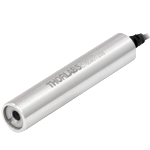 |
 |
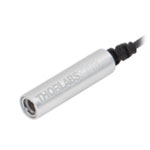 |
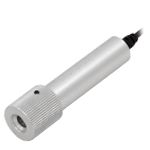 |
| Item # | CPS635Ra | CPS635 | CPS635S | CPS635Fb |
| Type | Fixed | Fixed | Fixed | Adjustable |
| Wavelength (Typical) | 635 nm | 635 nm | 635 nm | 635 nm |
| Power (Typical) | 1.2 mW | 4.5 mW | 4.5 mW | 4.5 mW |
| Laser Safety Class | 3R | 3R | 3R | 3R |
| Beam Shapec (Click for Profile) |
Ø2.9 mm | 4.5 mm x 1.0 mm | 3.8 mm x 1.2 mm | Collimated 5.0 mm x 1.9 mm |
| Housing Dimensions | Ø11.0 mm x 58.0 mm | Ø11.0 mm x 40.0 mm | Ø8.0 mm x 30 mm | Ø11.0 mm x 54 mm |
| Specifications |

| Click Image for Full View (Not to Scale) |
 |
 |
 |
| Item # | CPS650Fa | CPS670Fa | CPS780S |
| Type | Adjustable | Adjustable | Fixed |
| Wavelength (Typical) | 650 nm | 670 nm | 780 nm |
| Power (Typical) | 4.5 mW | 4.5 mW | 2.5 mW |
| Laser Safety Class | 3R | 3R | 3R |
| Beam Shapeb (Click for Profile) |
Collimated 5.0 mm x 2.4 mm |
Collimated 5.0 mm x 2.4 mm |
3.8 mm x 1.6 mm |
| Housing Dimensions | Ø11.0 mm x 54 mm | Ø11.0 mm x 54 mm | Ø8.0 mm x 30 mm |
| Specifications |

| Click Image for Full View (Not to Scale) |
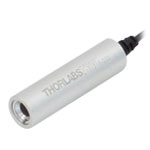 |
 |
| Item # | CPS830 | CPS830S |
| Type | Fixed | Fixed |
| Wavelength (Typical) | 830 nm | 830 nm |
| Power (Typical) | 3.0 mW | 3.0 mW |
| Laser Safety Class | 3R | 3R |
| Beam Shapea (Click for Profile) |
4.4 mm x 1.1 mm | 4.0 mm x 1.3 mm |
| Housing Dimensions | Ø11.0 mm x 40 mm | Ø8.0 mm x 30 mm |
| Specifications |
| Click Image for Full View (Not to Scale) |
 |
 |
 |
 |
| Item # | CPS850 | CPS850S | CPS980 | CPS980S |
| Type | Fixed | Fixed | Fixed | Fixed |
| Wavelength (Typical) | 850 nm | 850 nm | 980 nm | 980 nm |
| Power (Typical) | 3.5 mW | 3.5 mW | 4.5 mW | 4.5 mW |
| Laser Safety Class | 3R | 3R | 3R | 3R |
| Beam Shapea (Click for Profile) |
4.5 mm x 1.2 mm | 3.8 mm x 1.5 mm | 3.8 mm x 1.8 mm | 3.8 mm x 1.8 mm |
| Housing Dimensions | Ø11.0 mm x 40 mm | Ø8.0 mm x 30 mm | Ø11.0 mm x 40 mm | Ø8.0 mm x 30 mm |
| Specifications |

Mounting Adjustable Focus CPS Laser Diode Modules
These adapters are available for those wishing to mount the laser module housing into SM1 (1.035"-40) lens tubes, 30 mm cage systems, Ø1/2" posts, or Ø1/2" or Ø1" mounts. Please see the application photos in the Overview tab for more details. The AD8F and AD11F are also offered as part of a series of mounting kits; see below for details.
The KAD8F, KAD8NT, KAD11F, and KAD11NT Adapters provide ±6° of pitch and yaw adjustment. Two 80 TPI fine adjustment screws on the front plate of the adapter control the pitch and yaw position and can be turned using a 5/64" (2.0 mm) hex key.
Please note that the knurled knob used for focus adjustment on the CPS635F, CPS650F, and CPS670F laser modules is too large for the mounting adapter bore. This knob can be unthreaded to mount the module in the same manner as the collimated versions, as shown in the animation to the right. Please make sure to loosen the setscrews locking the knob in place before unthreading; not doing so can damage the threading. Alternatively, the module can be mounted by threading the cord and phono plug through the adapter first.
| Click Image to Enlarge |  |
 |
 |
 |
 |
 |
 |
 |
| Item # | AD8F | KAD8F | KAD8NT | AD11BA | AD11F | AD11NT | KAD11F | KAD11NT |
| Description | Externally SM1-Threaded Adapter |
Externally SM1-Threaded Kinematic Adapter with Pitch and Yaw Adjustment |
Unthreaded Kinematic Adapter with a 1" Outer Diameter and Pitch and Yaw Adjustment | Unthreaded Adapter with a 1/2" Outer Diameter | Externally SM1-Threaded Adapter |
Unthreaded Adapter with a 1" Outer Diameter | Externally SM1-Threaded Kinematic Adapter with Pitch and Yaw Adjustment |
Unthreaded Kinematic Adapter with a 1" Outer Diameter and Pitch and Yaw Adjustment |
| Diode Module Housing Diameter | 8 mm | 11 mm | ||||||

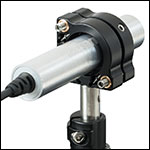
Click to Enlarge
MK11F Mounting a CPS635R Laser Diode Module
- Securely Mount Ø11 mm Laser Diode Modules
- Angular Range: ±4°
- Compact Nominal Footprint: 0.79" x 0.52" (20.0 mm x 13.3 mm)
- Resolution: 13 mrad (0.77°) per Revolution via Two M2.5 x 0.20 Precision Adjusters
- 4-40 (M3) Mounting Holes Allow for Left- or Right-Handed Orientation
Thorlabs' Mini-Series Kinematic Mount for Cylindrical Components is our most compact solution for mounting the Ø11 mm laser modules sold above. This two-adjuster kinematic mount features a nominal 0.79" x 0.52" (20.0 mm x 13.2 mm) footprint, which is the same as our Mini-Series kinematic mirror mounts. Cylindrical components are secured at three points using a nylon-tipped locking screw and a double-bored mounting hole. Both the nylon-tipped setscrew and the two M2.5 x 0.20 adjuster screws accept a 0.050" (1.3 mm) hex key (not included).
For ease of adjustment, we recommend using the 0.050" hex key thumbscrews. We also offer a locking collar and spanner wrench for locking the adjuster screws in a desired position or for creating a hard stop.

| Mounting Kit Components | ||||
|---|---|---|---|---|
| Item # | CPS11K | |||
| Laser Module Mounting Adapter |
AD8F | AD11F | ||
| Kinematic Mirror Mount |
KM100T | |||
| Ø1/2" Post | TR3 | TR75/M | TR3 | TR75/M |
| Ø1/2" Post Holder | PH3 | PH75/M | PH3 | PH75/M |
| Mounting Base | BA2 | BA2/M | BA2 | BA2/M |
| Power Supply | LDS5 | LDS5-EC | LDS5 | LDS5-EC |

Click to Enlarge
CPS650F Mounted on a CPS11K Kit
- Includes All Necessary Mounting Hardware and Power Source
- Compatible with Our Range of Laser Modules
- CPS08K(-EC): Ø8 mm Module Housing
- CPS11K(-EC): Ø11 mm Module Housing
- LDS5(-EC) 5 VDC Power Supply Included
These Laser Module Mounting Kits contain all of the components needed to mount and power our laser modules (i.e., a power supply with a selectable line voltage of 115 V or 230 V, a location-specific power cable, and a hex key to secure the laser module to the mount). For Ø8 mm housings, choose the CPS08K(-EC) kit, and for Ø11 mm housings, choose the CPS11K(-EC) kit.
Please see the table in the upper right for a list of components included in each mounting kit. For alternate mounting options, please see our selection of mounting adapters above (adapters compatible with this kit must be externally SM1 threaded). For individual power supplies, including a 5 VDC external battery pack, see below.


LDS5 Pin Diagram
- Compatible with CPS Laser Modules
- 5 VDC Power Output
- 6 ft (183 cm) Cable with 2.5 mm Phono Plug
The LDS5 is a 5 VDC power supply that is ideal for use with our CPS laser modules. A 6 ft (183 cm) cable with a 2.5 mm phono plug extends from the body of the power supply for connection to a CPS module.
The power supply has a selectable line voltage of 115 or 230 V. A 120 VAC power cable is included with the LDS5, while the LDS5-EC comes with a 230 VAC power cable. To order this item with a different power cable, please contact tech support.

- Portable USB Battery Pack with 5 VDC and up to 2 A Output
- Compatible with CPS Laser Modules and USB-Powered Devices
- 10 000 mAh Capacity
Thorlabs offers the CPS1 Battery Pack for powering our CPS laser modules and other USB-powered devices. The CPS1 battery pack outputs 5 VDC at up to 2 A, and offers 10 000 mAh capacity. A fully charged CPS1 battery pack can power any CPS laser module for at least 36 hours of continuous operation. The pack includes a USB-to-Micro-USB cable for charging and a custom USB-to-Phono cable for powering the CPS laser module. To activate the battery, simply push the power button once. The pack may be charged using standard 5 V USB chargers for portable devices or using a computer USB port. While the battery pack is charging, it can still supply power to an attached laser module.
The CPS1 Battery Pack also includes an LED flashlight adjacent to the micro-USB port. The flashlight is activated and deactivated by holding the power for two seconds.
When connecting the CPS Diode Module, the module and adapter should be connected first. Then the adapter cable should be plugged into the isolated power supply to avoid a short circuit in the phono jack. Please note that the USB adapter included with this battery pack is not intended to be used with power supplies that are not current-limited or isolated from ground, such as some computers or laptops.
 Products Home
Products Home




















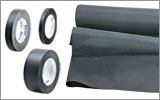

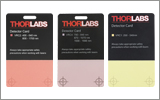

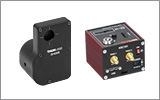
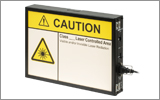
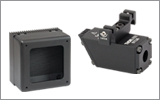

 Zoom
Zoom

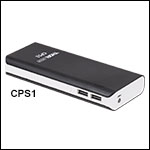
 Compact Laser Modules with Phono Jack
Compact Laser Modules with Phono Jack